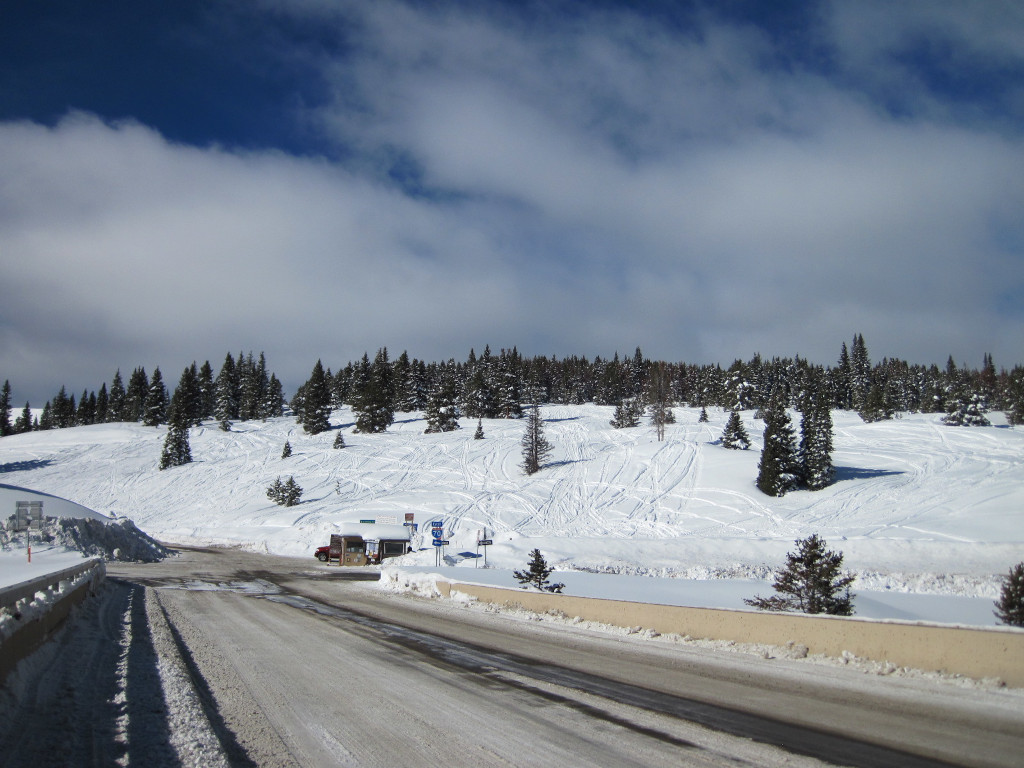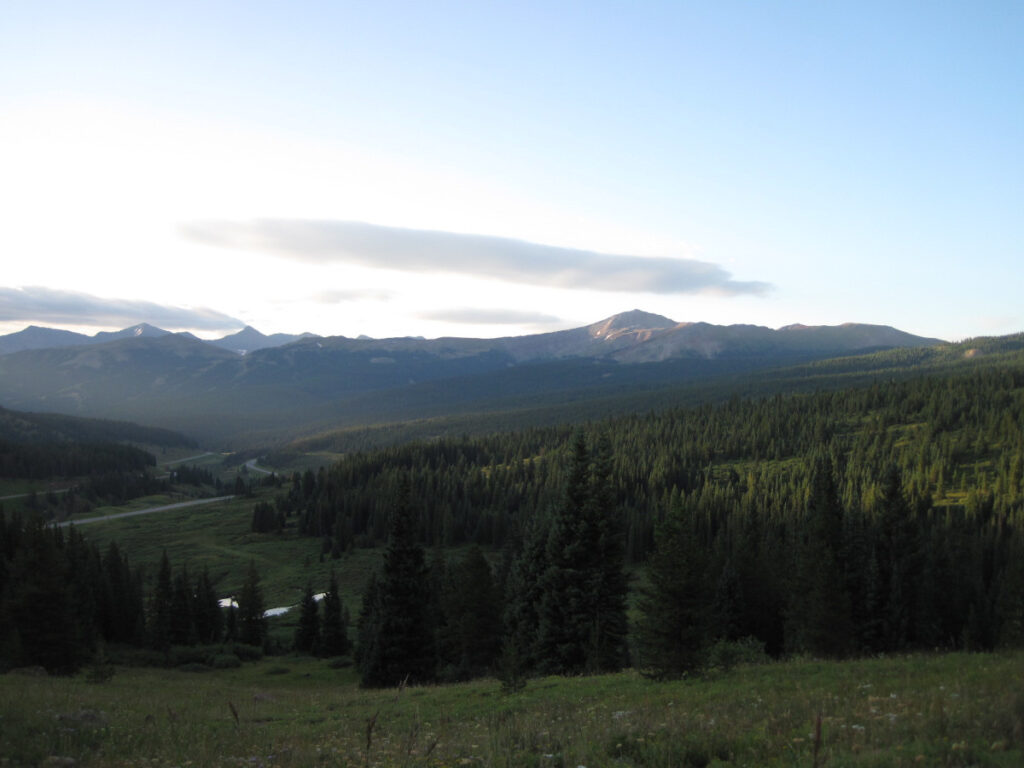Vail Pass
I-70 runs over Vail Pass, and this is a crucial artery for anyone that is traveling the east-west corridor through Colorado. The pass links Summit county on the eastern side with Eagle County on the western side.
Vail Pass is a popular spot for recreation, with a bike path traveling the full length of the path and plenty of terrain for snowmobiles and other winter recreational activities at the top.

Seasonal Info
Vail Pass is open year-round. The pass may close during the winter season for snowstorms.
Vail Pass Stats
- Max Elevation: 10,666'
- Mountain Range: Gore Range
Both of the panorama photos below were taken from Copper Mountain while looking towards the eastern side of Vail Pass. The high peaks of the Gore Range can be seen on the right side in the distance.


Recreation on Vail Pass
Popular things to do on Vail Pass include:
- Backcountry Skiing & Snowboarding
- Snowmobiling
- Cycling
- 4-Wheeling on Shrine Pass

Biking Vail Pass
There is a paved bike path that runs the full length of Vail Pass on each side. The slope is moderate, mostly matching the slope of the interstate as it traverses over the pass.
Vail Summit Rest Area

The Vail Pass Rest Area is located just below the summit of the pass, just slightly toward the eastern side. There are exits from both the eastbound and westbound lanes of I-70 that can access the rest area. The main rest area parking here is for through-travelers. You’ll see parking for the recreation area along the road just outside of the rest area entrance. You may park there for hiking, snowmobiling, and for using the Vail Pass bike path.


Vail Pass FAQ
The avg. closure on Vail Pass is around 1.35 hours, but this figure includes closures for accidents. Closures for weather are much longer. If the snow has stopped, the pass should be open within a few hours.
Vail Pass can be dangerous, especially in the snow. This is an interstate, so traffic will move much faster here in good weather than on other passes like Loveland Pass or Berthoud Pass.

Tips for Traveling over Vail Pass
Truckers use low gears – Get familiar with mountain pass safety before traveling here. Use low gears to keep your speed down without overheating your brakes. Vail Pass Has RUNAWAY TRUCK RAMPS for emergency use only.
Conditions are often worse at the top during bad weather – The elevation makes a big difference. The snow will come down harder. Cold rain can turn to snow. Slush can turn to ice. Take extra care at all times, but especially near the top of Vail Pass.
Watch out for wildlife – Especially deer that can get spooked and run across the interstate. There are wildlife underpasses along the way, but you can still expect to see wildlife on or near the roadway.

Vail Pass closes more often than any other part of I-70 in Colorado. In a period of 4 years from the beginning of 2012 to the end of 2015, Vail pass closed 91 times while the Eisenhower tunnel only closed 68 times in the same period (CDOT).


